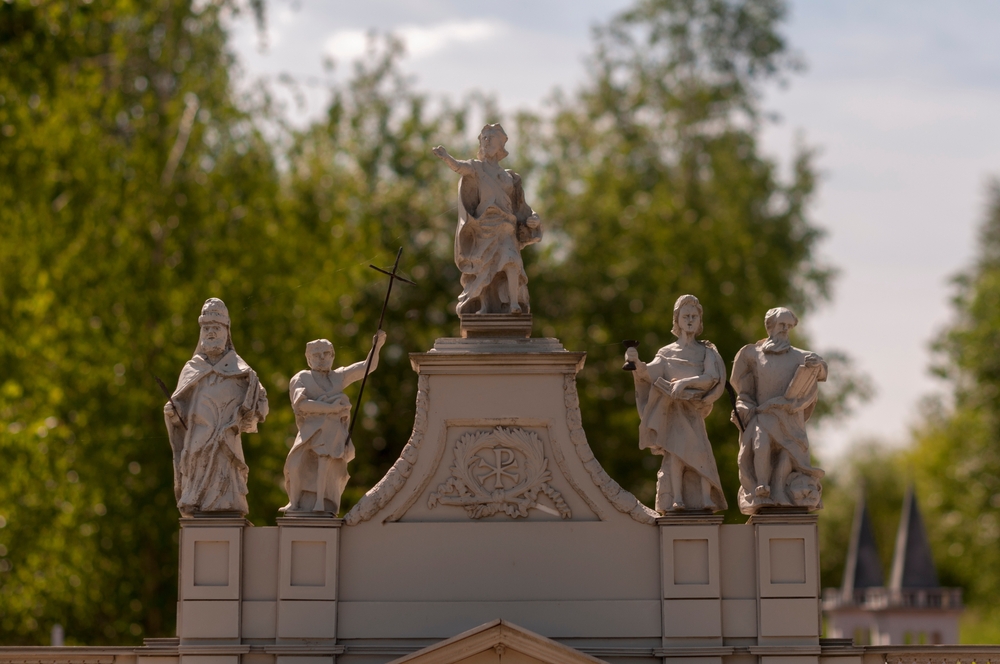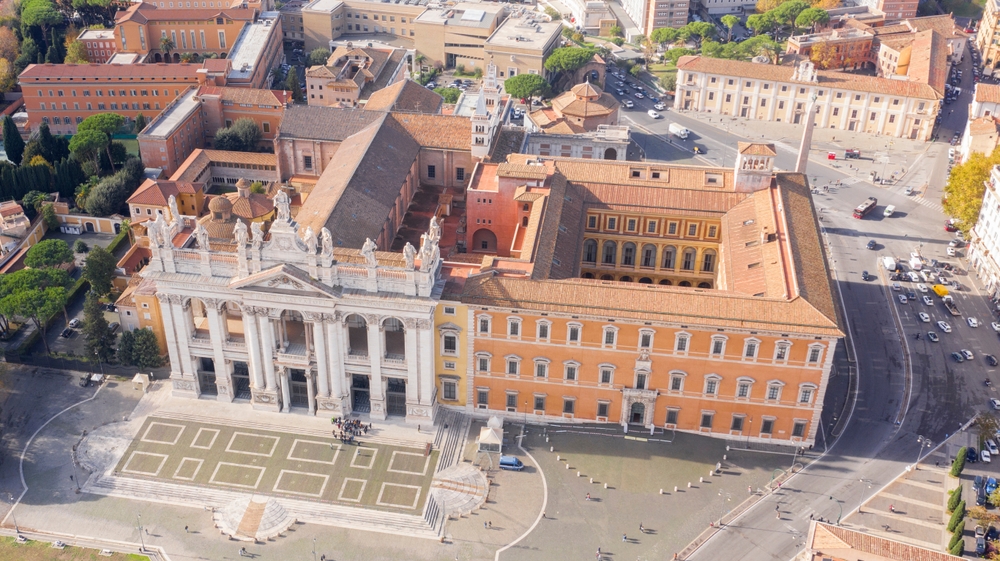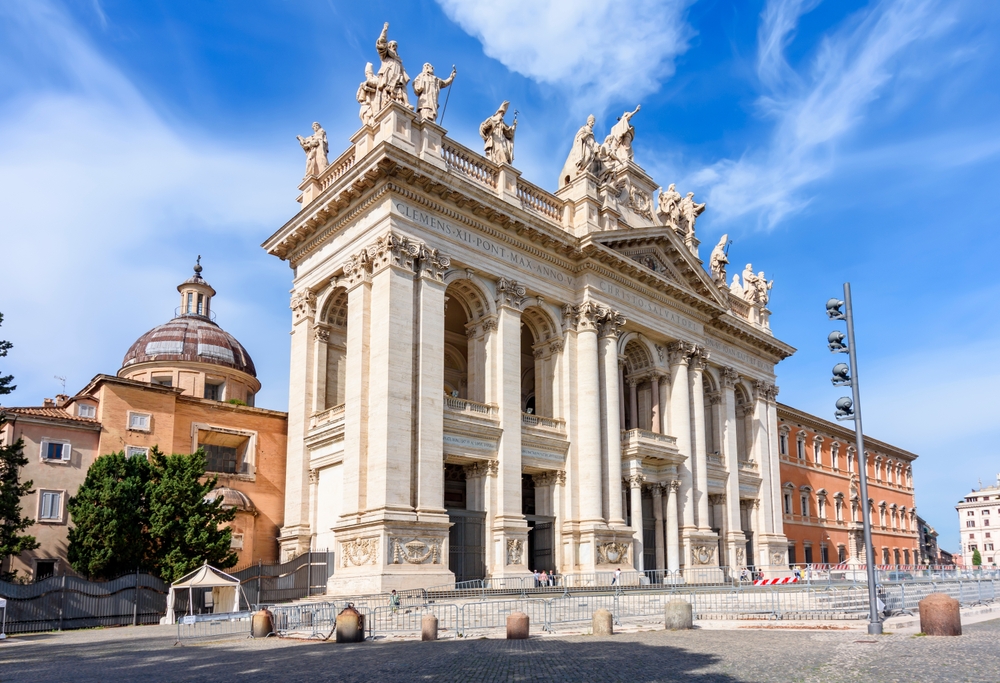Welcome to Our Complete Guide to the Archbasilica of Saint John Lateran
The Archbasilica of Saint John Lateran holds immense significance as the Cathedral of Rome and is the oldest basilica in the Western world.
It is often referred to as the "Mother and Head of all Churches" for its pivotal role in the Christian faith. As the official seat of the Pope, this basilica is an essential visit for anyone exploring the history and spiritual heritage of Rome.
In this guide, we'll provide all the information you need, from how to get there, things to do, and the best time to visit, to an in-depth look at the sights inside and out. Read on to explore this incredible monument, a treasure trove of art, history, and faith
The Archbasilica of Saint John Lateran Quick Facts
Tickets for The Archbasilica of Saint John Lateran
Admission to the Archbasilica is free, but donations are welcome to help maintain its rich heritage.
While entry to the basilica is free, tickets are required to visit the Cloister, Scala Sancta, and the Museum of the Lateran Treasury.
Guided tours provide deeper insight into the basilica’s history and art, and guided tours are available. We recommend booking online to guarantee availability, particularly during peak seasons.
Do I Need a Guided Tour to the Archbasilica of Saint John Lateran?
Enhance your visit to the Archbasilica of Saint John Lateran with a guided tour, where expert guides take you through its rich art and history. You'll gain valuable insights into the intricate artworks and explore the basilica more deeply. A guided tour is highly recommended for a more enriching experience.
Why Visit the Archbasilica of Saint John Lateran?
The Archbasilica of Saint John Lateran is a must-visit for its spiritual, historical, and artistic importance:
- Spiritual Significance: It is the oldest basilica and the official seat of the Pope, holding immense spiritual value.
- Historical Importance: Dating back to the 4th century, it showcases varied architectural styles and a rich history.
- Art & Architecture: The basilica is known for its mosaics, sculptures, and frescoes, representing different artistic periods.
- Papal Connection: The site of numerous papal ceremonies, including coronations.
- Holy Stairs: Adjacent to the basilica, the Scala Sancta is believed to be the stairs Jesus ascended before Pontius Pilate, making it a pilgrimage site.
- Relics: The basilica houses relics like the heads of Saints Peter and Paul, adding to its religious significance.

Things to Do at the Archbasilica of Saint John Lateran
Visiting the Archbasilica of Saint John Lateran offers a range of activities that highlight its religious, artistic, and historical importance. Below are some must-see areas:
- Main Basilica Interior: Redesigned in the 17th century by Francesco Borromini, the basilica's interior features Baroque elements and statues of the 12 Apostles, sculpted by Bernini's students. The High Altar contains a relic of Saint Peter’s original wooden altar.
- Cloister: A serene 13th-century structure with Cosmatesque marble columns, perfect for reflection and admiring the architectural detail.
- Scala Sancta (Holy Stairs): These 28 marble steps are believed to be the ones Jesus ascended during his trial. Pilgrims climb them on their knees in a traditional act of devotion.
- Museum of the Lateran Treasury: This museum holds a vast collection of Christian relics, including gilded shrines, liturgical vessels, and vestments.
- Sancta Sanctorum Chapel: One of the holiest places in the Lateran complex, it contains ancient relics, including fragments of the True Cross and an image of Jesus the Redeemer.
- Papal Tombs: Six papal tombs are housed in the basilica, including those of Pope Innocent III and Pope Martin V.
How to Get There & Location
The Archbasilica of Saint John Lateran is situated in Piazza di S. Giovanni in Laterano, southeast of Rome’s historic center. The basilica is easily accessible by various means:
- By Metro: Take Line A (red) or Line C (green) to San Giovanni station; it’s an 8-minute walk from the station to the basilica.
- By Bus: Bus lines 16, 81, 85, 87, 665, and 714 stop at Piazza San Giovanni in Laterano, just 2 minutes on footfrom the basilica.
- Walking: You can also reach nearby attractions, such as the Colosseum and Roman Forum, within 20-30 minutes.
You can find official Public Transport Maps via this link.
Opening Hours & Best Time to Visit
- Basilica Hours: 7 am - 6:30 pm daily.
- Sacristy: 8 am - 12 pm / 4 pm - 6 pm.
- Museum of the Lateran Treasury: 10 am - 5:30 pm.
The best time to visit is during spring and autumn, with pleasant weather and fewer crowds. Weekdays offer a quieter experience, and visiting during early mornings or late afternoons ensures a peaceful atmosphere.
Plan to spend at least 2-3 hours exploring the basilica, including the Cloister, Scala Sancta, and Museum.

A Brief History of the Archbasilica of Saint John Lateran
The Archbasilica of Saint John Lateran has a rich and layered history spanning over millennia. Below are some key historical events:
- Commissioned by Emperor Constantine: Built in 324 AD, it was the first Christian basilica publicly funded by the Roman Empire.
- Renaming and Dedication: Originally dedicated to Christ the Saviour, the basilica was rededicated by Pope Sergius III in the 9th century to Saint John the Baptist and Saint John the Evangelist.
- First Christian Church: It marked the Roman Empire's official endorsement of Christianity by being the first publicly funded church.
- Earthquakes and Fires: The basilica endured severe damage during an earthquake in 897 AD and a fire in 1308, leading to multiple restorations.
- Baroque Redesign: Francesco Borromini’s 17th-century redesign transformed the basilica with Baroque architectural elements.
- Ecumenical Councils: The basilica hosted five general councils of the Western Church, most notably the Fourth Lateran Council in 1215.
- Papal Residence: Until the 14th century, the basilica’s adjacent Lateran Palace served as the Pope's official residence.
- UNESCO World Heritage Site: Since 1980, it has been part of Rome’s Historic Centre, recognized for its cultural and religious significance.
The Archbasilica of Saint John Lateran in Popular Culture
The Archbasilica of Saint John Lateran appears across various cultural forms, reflecting its historical and spiritual significance:
- Literature: Mentioned in Dan Brown’s "Angels & Demons", tied to secret societies and religious symbolism.
- Film: Featured in the 1965 film "The Agony and the Ecstasy," showcasing the basilica's grandeur.
- Television: Highlighted in historical documentaries, often focusing on its Catholic Church history.
- Video Games: Explored in "Assassin's Creed Brotherhood," depicting Renaissance Rome.
- Music & Art: Inspired classical compositions and famous artworks like Piranesi’s etchings.
Facilities & Accessibility of the Archbasilica of Saint John Lateran
The Archbasilica of Saint John Lateran ensures a comfortable and accessible visit for all travelers:
- Wheelchair Accessibility: Ramps are available at entrances and within the basilica. However, certain areas like the Scala Sancta are not accessible due to their historical nature.
- Restrooms: Public restrooms are available near the basilica and Cloister.
- Gift Shop: A shop near the basilica offers religious souvenirs, books, and items relating to the history of the site.
- Prayer and Reflection Areas: Quiet spaces for prayer and reflection are available inside the basilica and in the Cloister.
- Information Desks: Staff are available to offer guidance and provide maps to help visitors navigate the complex.
Visiting Rules of the Archbasilica of Saint John Lateran
To ensure a respectful experience for everyone, the following rules apply:
- Dress Code: Modest attire is required, covering shoulders and knees.
- Photography: Allowed in most areas, but no flash or tripods. Photography is prohibited at the Scala Sancta.
- Silence and Respect: Maintain a respectful silence inside the basilica.
- Mobile Phones: Keep phones on silent mode.
Traveler Tips
- Arrive early (before 9 am) to avoid crowds and enjoy a more serene experience.
- Join a guided tour for an in-depth understanding of the basilica’s history and artworks.
- Allocate at least 2-3 hours for a thorough exploration of the basilica and its complex.
- Don’t miss nearby landmarks like the Colosseum, Roman Forum, and Santa Maria Maggiore for a fuller experience of Rome.

Top Attractions Near the Archbasilica of Saint John Lateran
The area around the Archbasilica of Saint John Lateran is filled with incredible landmarks, all within a 30-minute walk, perfect for enhancing your Roman experience:
- Colosseum (1.3 km, 18-minute walk): An icon of ancient Rome, renowned for its architectural grandeur and history as a venue for gladiatorial combats and public spectacles.
- Basilica Santa Maria Maggiore (1.5 km, 20-minute walk): Perched on Esquiline Hill, this basilica blends paleochristian architecture with later enhancements, reflecting ancient Christianity.
- Roman Forum & Palatine Hill (2 km, 28-minute walk): The heart of Roman public life, home to temple ruins and the residences of Rome's elite.
- Circus Maximus (2 km, 28-minute walk): Once the largest chariot racing stadium, now a peaceful park for walks and picnics.
The Archbasilica of Saint John Lateran offers visitors a profound mix of Christian heritage, artistic beauty, and historical significance.
As the Pope’s cathedral, it is central to the Catholic faith and an essential stop for any traveler in Rome.
After your visit, explore nearby landmarks such as the Colosseum and the Roman Forum to enrich your Roman journey.

